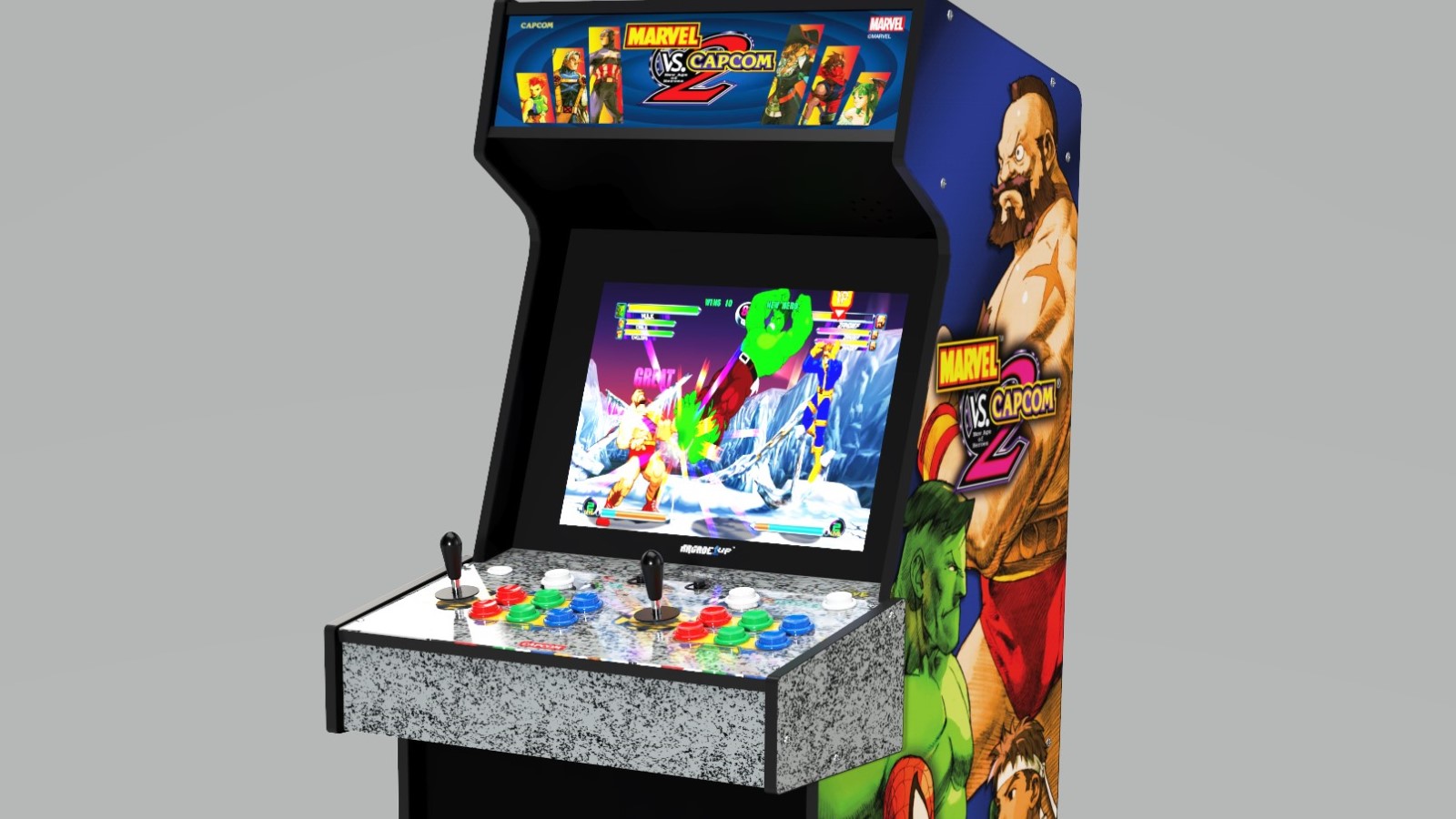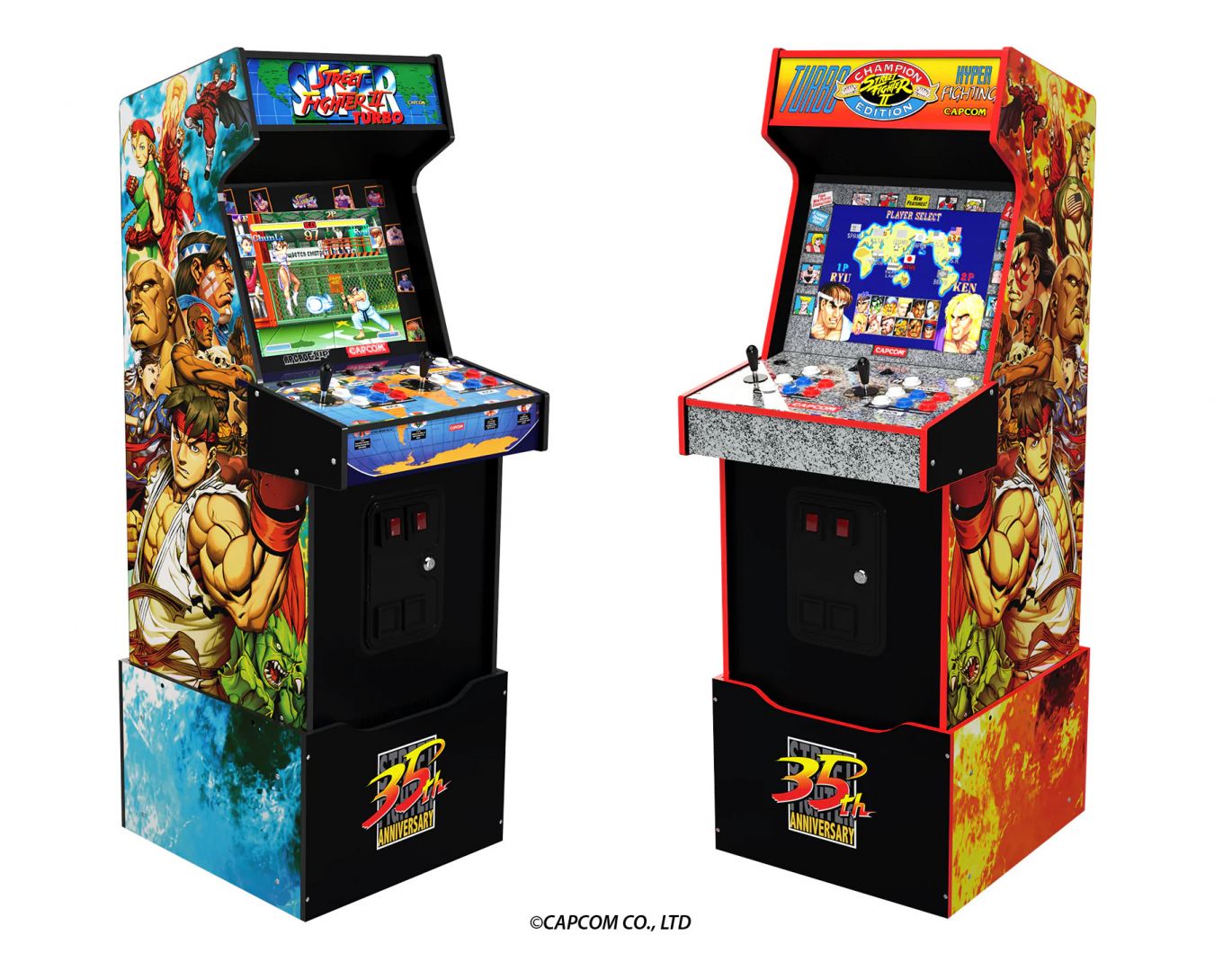History and Evolution of Capcom Home Arcade Cabinets

Capcom’s home arcade cabinets have been a staple of gaming for decades, bringing the excitement and intensity of arcade experiences directly into homes. From the iconic Street Fighter II cabinets to the modern marvels of the Capcom Home Arcade, this lineage represents a fascinating evolution in both design and technology.
Origins and Early Years
The roots of Capcom’s home arcade cabinet line can be traced back to the early 1980s, with the release of the “Capcom Home Arcade” system in 1983. This pioneering console, featuring games like “Vulgus” and “Pirate Ship”, paved the way for a future of immersive gaming experiences. While the first generation lacked the iconic cabinet design that would define the brand, it established Capcom’s commitment to bringing arcade quality to home consoles.
The Golden Age of Arcade Cabinets
The 1990s marked a golden age for Capcom’s home arcade cabinets. This period witnessed the birth of iconic cabinets like the Street Fighter II cabinet, which became a cultural phenomenon and a symbol of the arcade era. These cabinets were characterized by their robust construction, arcade-style controls, and immersive gameplay.
- Street Fighter II Cabinet: The Street Fighter II cabinet, released in 1991, was a groundbreaking design. Its iconic red and black color scheme, six-button layout, and vibrant artwork cemented its status as a gaming icon. It featured a high-quality monitor, a comfortable seating position, and realistic sound effects, all designed to enhance the arcade experience.
- X-Men: Children of the Atom Cabinet: This 1994 cabinet, inspired by the popular Marvel Comics series, further cemented Capcom’s reputation for creating visually stunning and engaging arcade cabinets. Its four-player functionality, unique control layout, and high-resolution graphics made it a favorite among arcade enthusiasts.
- Marvel vs. Capcom: Clash of Super Heroes Cabinet: This 1998 cabinet, combining iconic Marvel and Capcom characters, marked a significant step forward in terms of graphics and gameplay. Its fast-paced action, unique character roster, and innovative combo system made it a highly competitive and engaging experience.
Modern Innovations and the Capcom Home Arcade
The 21st century saw Capcom embrace modern technology and innovative design in its home arcade cabinets. While maintaining the core values of the classic cabinets, newer releases incorporated advancements like high-definition displays, improved controls, and wireless connectivity.
- Capcom Home Arcade: This modern cabinet, released in 2020, features a curated collection of classic Capcom games, a high-definition display, and a faithful reproduction of classic arcade controls. It also incorporates modern features like wireless connectivity and a built-in speaker system, providing a seamless and immersive gaming experience.
Evolution of Technology
The evolution of Capcom’s home arcade cabinets is inextricably linked to advancements in technology. The early cabinets relied on simple graphics and rudimentary sound effects, while later generations showcased stunning visuals, complex soundtracks, and advanced gameplay mechanics.
- Graphics: From the pixelated sprites of early cabinets to the detailed polygons of modern releases, the evolution of graphics has been a key factor in the development of Capcom’s home arcade cabinets. The introduction of high-definition displays in recent years has significantly enhanced the visual experience.
- Sound: The sound effects and music in Capcom’s home arcade cabinets have also evolved dramatically over time. From the simple beeps and boops of the early cabinets to the complex soundtracks and immersive audio environments of modern releases, sound has become an integral part of the gaming experience.
- Controls: The controls have also undergone significant changes, with the introduction of more responsive buttons, joysticks, and specialized input devices. The classic six-button layout, popularized by the Street Fighter II cabinet, has remained a staple of Capcom’s arcade cabinets, providing a familiar and intuitive control scheme for players.
Timeline of Significant Releases
| Year | Release | Description |
|---|---|---|
| 1983 | Capcom Home Arcade | First home arcade system featuring games like “Vulgus” and “Pirate Ship”. |
| 1991 | Street Fighter II Cabinet | Iconic cabinet that defined the arcade era, featuring a six-button layout and vibrant artwork. |
| 1994 | X-Men: Children of the Atom Cabinet | Four-player cabinet featuring unique controls and high-resolution graphics. |
| 1998 | Marvel vs. Capcom: Clash of Super Heroes Cabinet | Cabinet combining Marvel and Capcom characters, featuring fast-paced action and innovative combo system. |
| 2020 | Capcom Home Arcade | Modern cabinet featuring a curated collection of classic Capcom games, a high-definition display, and faithful reproduction of classic arcade controls. |
Notable Capcom Home Arcade Cabinets

Capcom, a pioneer in the arcade gaming industry, has released a plethora of home arcade cabinets over the years, each capturing the essence of classic arcade experiences. These cabinets, featuring iconic games that have shaped the gaming landscape, have provided countless hours of entertainment for gamers of all ages. Let’s explore some of the most popular and influential Capcom home arcade cabinets, delving into their unique features, game selections, and enduring impact.
The Capcom Home Arcade
The Capcom Home Arcade, released in 2020, is a compact and stylish cabinet designed to evoke the nostalgic feel of classic arcades. It features a 17-inch LCD screen, two classic joystick controls, and six buttons per player. The cabinet comes pre-loaded with 16 classic Capcom games, including Street Fighter II: Hyper Fighting, 1942, and Ghosts ‘n Goblins. The Capcom Home Arcade is designed for easy setup and portability, allowing gamers to enjoy classic arcade experiences in the comfort of their homes.
The Capcom Home Arcade (2023)
The Capcom Home Arcade (2023), an updated version of the original, features a larger 19-inch LCD screen, improved audio quality, and a more robust build. It includes a wider selection of games, encompassing 24 titles, including Mega Man 2, Final Fight, and Strider. The updated cabinet also features a redesigned user interface, making it easier to navigate and select games.
The Arcade1Up Capcom Legacy Cabinet
The Arcade1Up Capcom Legacy Cabinet, released in 2021, is a larger and more immersive arcade cabinet designed for home use. It features a 17-inch LCD screen, a classic joystick control, and four buttons per player. The cabinet comes pre-loaded with 12 classic Capcom games, including Street Fighter II: Champion Edition, Street Fighter Alpha 2, and Darkstalkers: The Night Warriors. The cabinet also features a unique “Legacy” mode, which allows players to explore the history of Capcom’s arcade games.
The Arcade1Up Capcom Legacy 2 Cabinet
The Arcade1Up Capcom Legacy 2 Cabinet, released in 2022, is an updated version of the original Legacy Cabinet, featuring a larger 17-inch LCD screen, improved audio quality, and a wider selection of games. It includes 12 classic Capcom games, including Street Fighter III: Third Strike, Marvel vs. Capcom 2, and Capcom vs. SNK 2. The cabinet also features a redesigned user interface, making it easier to navigate and select games.
Table of Notable Capcom Home Arcade Cabinets
The table below compares the key features and release dates of the notable Capcom home arcade cabinets discussed above:
| Cabinet Name | Release Date | Screen Size | Number of Players | Game Selection |
|---|---|---|---|---|
| Capcom Home Arcade | 2020 | 17-inch LCD | 2 | 16 classic Capcom games |
| Capcom Home Arcade (2023) | 2023 | 19-inch LCD | 2 | 24 classic Capcom games |
| Arcade1Up Capcom Legacy Cabinet | 2021 | 17-inch LCD | 2 | 12 classic Capcom games |
| Arcade1Up Capcom Legacy 2 Cabinet | 2022 | 17-inch LCD | 2 | 12 classic Capcom games |
The Impact and Legacy of Capcom Home Arcade Cabinets

Capcom’s home arcade cabinets, with their iconic designs and thrilling gameplay, left an indelible mark on the gaming landscape. They not only revolutionized home gaming but also shaped the evolution of consoles and video games, particularly in the realm of fighting games. Their influence continues to be felt today, with their legacy inspiring countless developers and gamers alike.
The Influence of Capcom Arcade Cabinets on Home Gaming Culture
Capcom arcade cabinets played a pivotal role in shaping home gaming culture. They introduced innovative gameplay mechanics, stunning graphics, and immersive soundtracks that captivated players. This, in turn, fueled the demand for similar experiences at home, leading to the development of home consoles and the proliferation of video games. The success of Capcom arcade cabinets like Street Fighter II, Mega Man, and Ghosts ‘n Goblins inspired countless home gamers to seek out similar experiences. These cabinets also fostered a sense of community, bringing people together in arcades to compete and share their love for gaming.
The Evolution of Home Consoles and Video Games, Capcom home arcade cabinet
Capcom’s home arcade cabinets directly influenced the evolution of home consoles and video games. The success of these cabinets demonstrated the potential of arcade-quality graphics and gameplay on home systems. Developers and manufacturers responded by pushing the boundaries of technology, leading to the development of more powerful consoles and more sophisticated games. The introduction of home versions of popular Capcom arcade games, such as Street Fighter II and Mega Man, set a new standard for home gaming experiences. This paved the way for the development of dedicated fighting game consoles, like the Neo Geo, further blurring the lines between arcade and home gaming.
The Impact of Capcom Arcade Cabinets on the Development of Fighting Games
Capcom’s arcade cabinets played a defining role in the development of fighting games. Street Fighter II, released in 1991, revolutionized the genre, introducing iconic characters, a diverse cast of fighters, and innovative gameplay mechanics. This success paved the way for a plethora of fighting games, from Mortal Kombat to Tekken, which borrowed heavily from the Street Fighter formula. The impact of Capcom arcade cabinets on the fighting game genre is undeniable, as they established the core elements and principles that continue to shape the genre today.
The Capcom home arcade cabinet, a nostalgic beacon of pixelated joy, evokes a sense of wonder that’s akin to discovering a hidden treasure. Just as you meticulously choose the perfect bathroom vanity and cabinet combo to enhance your personal sanctuary, the Capcom cabinet transforms your living space into a realm of arcade magic.
It’s a timeless reminder that the simplest pleasures often hold the greatest joy.
The Capcom home arcade cabinet, a relic of a bygone era, holds a special place in the hearts of many. Its sturdy construction and vibrant graphics evoke memories of endless hours spent battling pixelated foes. But what happens when the joystick fades and the screen flickers its last?
Just like those old cabinets, repurposed furniture can find a new life, transforming into functional and beautiful kitchen cabinets with a touch of soul. The same spirit of ingenuity that breathed life into those classic arcade games can be applied to give a fresh purpose to old furniture, breathing new life into the heart of your home.
